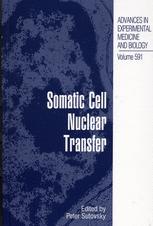

Most ebook files are in PDF format, so you can easily read them using various software such as Foxit Reader or directly on the Google Chrome browser.
Some ebook files are released by publishers in other formats such as .awz, .mobi, .epub, .fb2, etc. You may need to install specific software to read these formats on mobile/PC, such as Calibre.
Please read the tutorial at this link: https://ebookbell.com/faq
We offer FREE conversion to the popular formats you request; however, this may take some time. Therefore, right after payment, please email us, and we will try to provide the service as quickly as possible.
For some exceptional file formats or broken links (if any), please refrain from opening any disputes. Instead, email us first, and we will try to assist within a maximum of 6 hours.
EbookBell Team

0.0
0 reviewsWhen I was first approached to edit the present volume, I was somewhat reluc tant to undertake this humbling task because most of my own scientific expertise is derived fi'om studies of mammalian fertilization rather than somatic cell nuclear transfer (SCNT). However, in the last ten years, I was very fortunate to train, col laborate, and communicate with a number of distinguished "doners," many of whom kindly agreed to contribute to the present volume. This experience made me appre ciate that the understanding of cellular and molecular events during and after SCNT is deeply rooted in our knowledge of fertilization of mammalian ovum by the speramatozoon, to which I prefer to refer to as "natural fertilization," not to say that SCNT should be regarded as "unnatural fertilization". Unique cellular events aris ing from SCNT have no parallel in natural fertilization and early pre-implantation development. The list includes the requirement of donor cell-nuclear remodeling, disposal of donor cell organelles, the possibility of heteroplasmy (i. e. , presence of mixed mitochondrial genomes) and altered mode of oocyte activation. Thanks to seminal contributions of my distinguished colleagues, the present volume reviews the progress of SCNT technology in major mammalian species including mouse, pig, and cattle, while at the same time, parallels can be drawn and distinctions made between the cellular and molecular basis of nuclear transfer and fertilization.